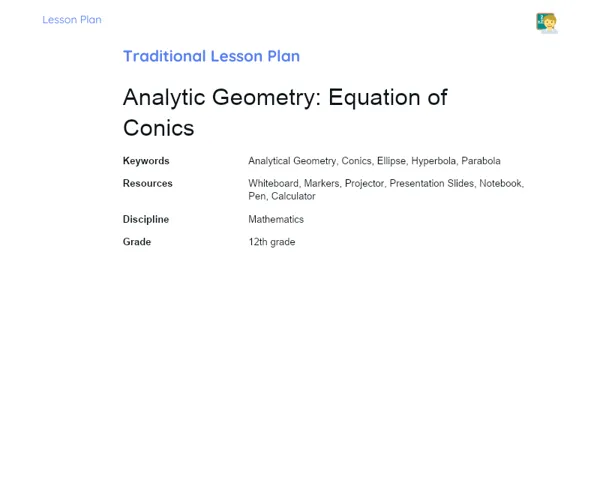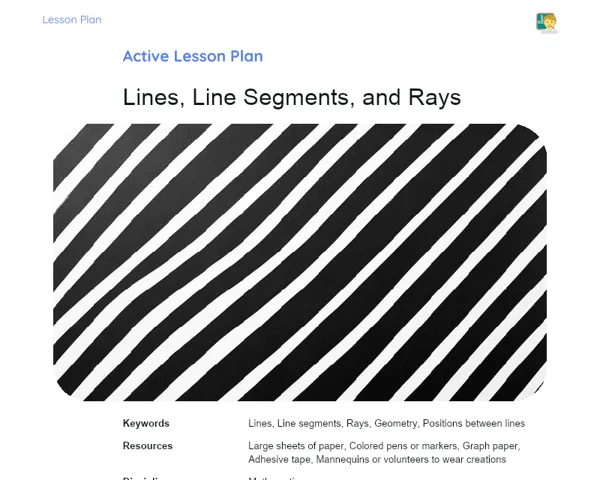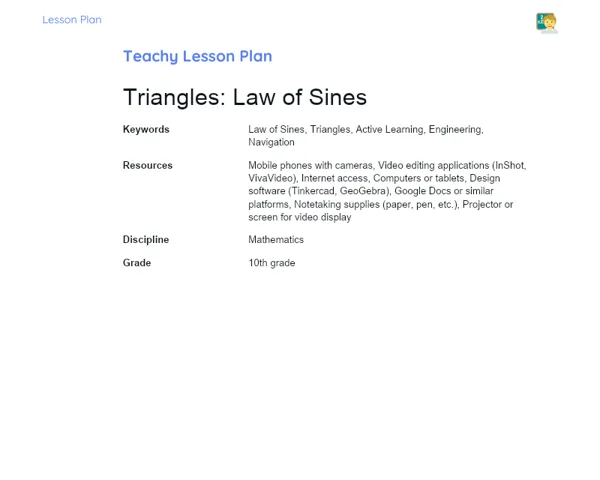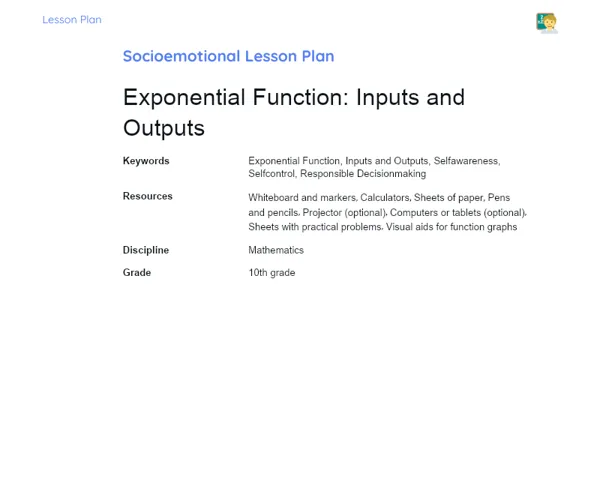Lesson Plan | Lesson Plan Tradisional | Addition and Subtraction of Decimal Numbers
| Keywords | Addition of Decimal Numbers, Subtraction of Decimal Numbers, Alignment of Decimal Numbers, Practical Problems, Guided Resolution, Properties of Addition, Properties of Subtraction, Everyday Context, Student Engagement, 5th Grade Mathematics |
| Resources | Whiteboard, Markers, Eraser, Projector (optional), Worksheet materials, Pencils, Erasers, Ruler, Calculator (optional) |
Objectives
Duration: (10 - 15 minutes)
This stage aims to clearly outline the lesson objectives, establishing what is expected from the students by the end of the session. Defining these objectives will help students grasp what will be covered and focus on their learning, facilitating their understanding of the content and application of the skills developed during the lesson.
Objectives Utama:
1. Understand the properties of addition and subtraction of decimal numbers.
2. Solve problems involving the addition and subtraction of decimal numbers using standard methods.
Introduction
Duration: (10 - 15 minutes)
The purpose of this initial stage is to create a relatable context for the students, highlighting the practical importance of learning about decimal numbers. The introduction also aims to ignite student interest in the topic, illustrating how mathematics is woven into everyday life and is beneficial in various situations.
Did you know?
Did you know that product prices in shops are often expressed in decimal numbers? For example, a chocolate bar might cost ₹350. Being able to add and subtract these amounts is not just helpful while shopping but also in figuring out whether the money we have is enough to pay for the items we desire.
Contextualization
To kick off the lesson on addition and subtraction of decimal numbers, begin by explaining to the students that we use decimal numbers in our daily lives, for instance, while shopping where we need to calculate prices, change, and discounts. Understanding how to add and subtract decimal numbers is crucial for managing money, measuring quantities in recipes, and interpreting data in charts and tables.
Concepts
Duration: (40 - 50 minutes)
The aim of this stage is to deepen students' understanding of adding and subtracting decimal numbers. Through thorough explanations, practical examples, and guided problem-solving, students will gain a solid grasp of the techniques required to perform these operations accurately. Additionally, practicing the questions will allow students to apply their learning and reinforce their understanding of the topic.
Relevant Topics
1. Introduction to Decimal Numbers: Explain that decimal numbers are an extension of whole numbers, helping to represent values between whole numbers. Discuss the position of the decimal point and its role in distinguishing the whole part from the decimal part.
2. Alignment of Decimal Numbers: Discuss the significance of properly aligning decimal numbers by the decimal point while performing addition and subtraction operations. Use visual examples to illustrate this concept.
3. Addition of Decimal Numbers: Demonstrate how to add decimal numbers, starting with the alignment of the numbers and moving through the addition column by column, from right to left. Provide examples, such as 3.45 + 1.76.
4. Subtraction of Decimal Numbers: Explain the process of subtracting decimal numbers similarly to addition, focusing on the need to align the numbers and subtract column by column. Use examples like 5.83 - 2.47.
5. Problem Solving: Present practical scenarios that require the addition and subtraction of decimal numbers, placing them in everyday contexts such as shopping and measurements. Solve these problems step by step.
To Reinforce Learning
1. Calculate the sum of 4.32 and 7.58.
2. Subtract 9.47 from 15.62.
3. If you have ₹200.00 and buy a book for ₹127.50, how much change will you get?
Feedback
Duration: (20 - 25 minutes)
🔍 Purpose: This phase of the lesson plan aims to solidify students' understanding of adding and subtracting decimal numbers. Through discussions on solutions and engaging with reflective questions, students get a chance to review concepts, clarify doubts, and share varied approaches to solving problems, ultimately enhancing both collective and individual comprehension of the content.
Diskusi Concepts
1. 📝 Discussion of Solved Questions: 2. To calculate the sum of 4.32 and 7.58, the numbers should be aligned by the decimal point:
4.32
+ 7.58
-------
11.90
First, we add the decimal places from right to left. Adding 2 and 8 gives us 10. We write down 0 and carry over 1. Then, we add 3 and 5, plus the carried 1, leading to 9. In the units place, we add 4 and 7, plus the carry, giving 12. Thus, the sum is 11.90. 3. To subtract 9.47 from 15.62, we align the numbers by the decimal point:
15.62
- 9.47
-------
6.15
We subtract the decimal places from right to left. First, we subtract 7 from 2, borrowing 1 from the next column, which turns 2 into 12 and 6 into 5, resulting in 5. We subtract 4 from 5, giving us 1. In the units place, we subtract 9 from 15, resulting in 6. Therefore, the result is 6.15. 4. To determine the change when buying a book for ₹127.50 with a ₹200.00 note, we align the numbers:
200.00
-127.50
-------
72.50
We subtract the decimal places from right to left. We subtract 5 from 0, borrowing 1 from the next column, transforming 0 into 10 and the next 0 into 9, which results in 5. We subtract 7 from 9, yielding 2. In the units column, we subtract 2 from 9, resulting in 7. Hence, the change is ₹72.50.
Engaging Students
1. 🤔 Student Engagement: 2. What part of adding or subtracting decimal numbers did you find most challenging? Why? 3. How did you feel while solving the practical problems? Did you feel confident? 4. Were you able to identify where to align the decimal numbers correctly? How significant was that? 5. In what other daily scenarios do you think you will utilize the addition and subtraction of decimal numbers? 6. Did anyone come up with a different approach to solving the problems? If yes, what was it?
Conclusion
Duration: (10 - 15 minutes)
The aim of this closing stage of the lesson plan is to summarize the key content shared, reinforce the link between theory and practice, and underline the significance of the topic in students' everyday lives. This reflection helps in solidifying learning and encouraging students to apply these concepts in real contexts, ensuring they achieve a deeper and more enduring understanding of the subject.
Summary
['Decimal numbers extend whole numbers and represent values between them.', 'The importance of accurately aligning decimal numbers by the decimal point while performing addition and subtraction.', 'The method of adding decimal numbers by aligning them and performing the addition column by column from right to left.', 'The approach to subtracting decimal numbers by alignment and subtracting column by column from right to left.', 'Solving real-life problems related to adding and subtracting decimal numbers.']
Connection
The lesson ties theory with practice by presenting concepts of addition and subtraction of decimal numbers, followed by practical examples and everyday problem-solving scenarios, such as shopping and measurements. This connection allows students to visualize the direct applicability of mathematical concepts in real-life situations, enhancing understanding and relevance.
Theme Relevance
Comprehending addition and subtraction of decimal numbers is essential for daily life, as these operations apply in various practical scenarios, such as shopping, calculating change, measuring ingredients for recipes, and interpreting data in charts and tables. Mastering decimal numbers equips students to carry out everyday activities with greater accuracy and efficiency.



